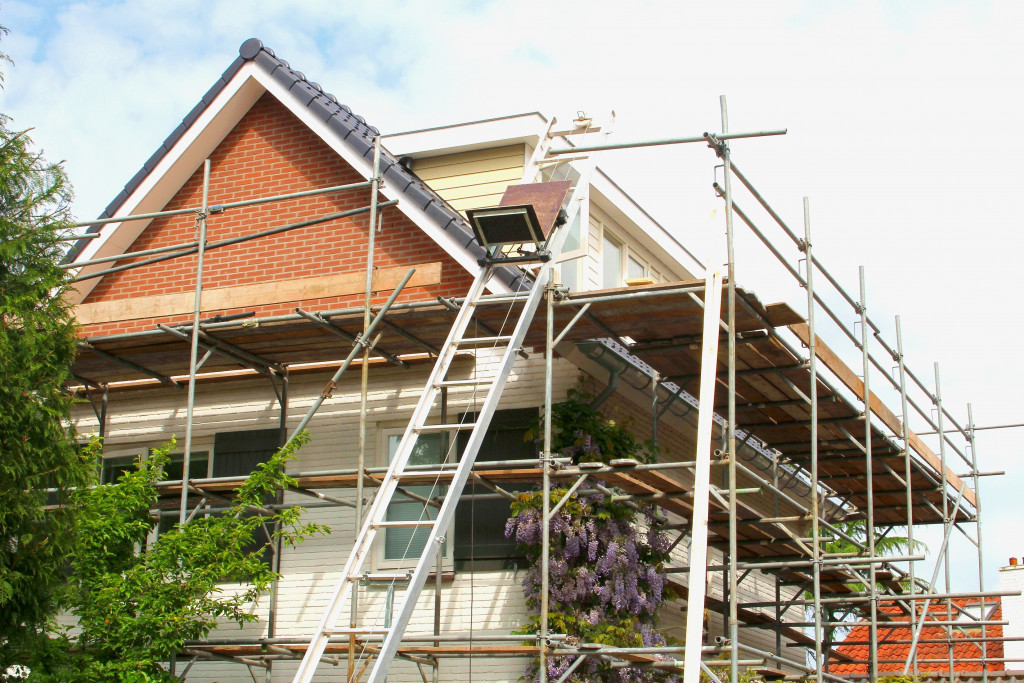- Upgrade door and window locks for better security
- Install a home security system with motion detectors, glass break sensors, and cameras
- Replace old electrical wiring to prevent home fires
- Install smoke and carbon monoxide detectors in key areas of the house
- Revamp the landscape by trimming shrubs and removing dead trees or branches.
Your home is your sanctuary, where you can relax and feel safe. However, if you neglect regular maintenance and upgrades, your home could become vulnerable to accidents and intruders. To ensure the safety and security of your home, consider these five home renovations that can help you create a more secure and safe living environment.
1. Upgrade Your Door and Window Locks
The first line of defense for any home is the entry points. If your door and window locks are old or poorly maintained, they could be easily compromised. To upgrade your locks, consider installing smart locks that use digital codes or biometrics to unlock your doors. You can also add a deadbolt to your front door for added security. For windows, you can install window locks that prevent them from being opened from the outside.
2. Install a Home Security System

A home security system can help you monitor your home for intruders and other dangers. Modern security systems come with features like motion detectors, glass break sensors, and cameras that can alert you if there is any suspicious activity. You can also opt for a system that allows you to monitor your home remotely, so you can keep an eye on your home even when you’re away.
To get started, you’ll need to choose a security system provider and decide what type of system is best for your needs. Consider factors such as the level of protection you need, budget, and installation requirements when deciding. Once you have chosen a system, it’s time to start the installation process. This may involve drilling for wiring or setting up a wireless solution. It’s important to read the instructions carefully, and if you’re uncomfortable handling the installation yourself, it’s best to hire a professional to do it for you.
3. Replace Old Electrical Wiring
Faulty electrical wiring is a leading cause of home fires. If your home is over 20 years old, you should consider having an electrician inspect your wiring. Old wiring can be a fire hazard and could also cause electrical shocks. Replacing old wiring with modern wiring can help prevent accidents and ensure your home is up to code.
4. Install Smoke and Carbon Monoxide Detectors
Smoke and carbon monoxide detectors protect your home from fire and gas leaks. It’s important to have smoke detectors in every bedroom and level of your home. Carbon monoxide detectors should be installed near your sleeping areas and outside your furnace. Make sure to test these detectors regularly to ensure they are functioning correctly.
Here’s how to install smoke and carbon monoxide detectors:
Preparing to Install the Detector
Before you start installing your detector, make sure you have all the necessary tools and materials that it requires. You’ll need a drill and screws or anchors to install the detector on your wall or ceiling. Check if your local building codes require any specific type of fastener for installation. Once you have everything ready, mark where you will place the detectors.
Installing the Smoke Detector
Position your smoke detector in a central location on each level of your home and at least 10 feet away from cooking appliances like stoves or ovens. Make sure it’s located somewhere that won’t get obstructed by furniture or curtains when mounted on the ceiling. Use a drill bit to create pilot holes for your screws or anchors, then secure your smoke detector. Lastly, fasten the electrical wires and test the detector to ensure it works properly.
Installing the Carbon Monoxide Detector
Like smoke detectors, position your carbon monoxide detector at least 10 feet away from fuel-burning appliances and within 15 feet of your sleeping area. Secure it with screws or anchors on the wall or ceiling, and ensure you don’t cover up its venting slots when mounting. After affixing it securely, connect it to an electrical outlet and test if its alarm works before moving on to the next step.
Testing the Detector
Once you’ve installed your detector, it’s important to test it regularly to ensure it works properly in an emergency. Test both smoke and carbon monoxide detectors by pressing the test button on each device. This should activate a loud alarm from the detector if it functions correctly. Make sure to replace batteries every six months. Additionally, always remember to clean or replace detectors when they expire according to manufacturer instructions.
5. Add a Fence

Adding a fence to your property is an effective way to create a secure and safe living environment. Investing in Trex Seclusions composite fencing offers superior security and durability, making it the perfect choice for your home. Unlike traditional wood or metal fences, Trex Seclusions is made of strong composite materials that won’t warp or rot over time.
In Closing
Upgrading your home to make it more secure and safe is a wise investment that can protect your family and your property. From upgrading your locks to installing a home security system, there are many steps you can take to ensure that your home is as secure as possible. With a little effort and investment, you can make your home a safe and secure haven for you and your family.

